The Scattering Effect-Based Smartphone-Assisted Colorimetric Sensing for Alkaline Phosphatase Detection
Abstract
1. Introduction
2. Materials and Methods
2.1. Chemicals and Materials
2.2. Instrumentation
2.3. Preparation of Solutions
2.4. Detection of Alkaline Phosphatase by the Smartphone-Assisted Colorimetric Method
2.5. Selectivity and Interference Study
3. Results and Discussion
3.1. Characterization of the Cu-GMP
3.2. Feasibility of Smartphone-Assisted Detection of Alkaline Phosphatase Depending on the Tyndall Effect
3.3. Optimization of the Detection Conditions for ALP Activity
3.4. Analytical Performance
3.5. Selectivity and Interference Study
3.6. Real Sample Analysis
4. Conclusions
Supplementary Materials
Funding
Institutional Review Board Statement
Informed Consent Statement
Data Availability Statement
Acknowledgments
Conflicts of Interest
Abbreviations
| ALP | Alkaline phosphatase |
| GMP | Guanosine-5′-monophosphate |
| TNAP | Tissue-nonspecific alkaline phosphatase |
| POCT | Point-of-care testing |
| MgSO4 | Magnesium sulfate |
| AG | Average gray |
| LOD | Limit of detection |
References
- Babaknejad, N.; Shareghi, B.; Saboury, A.A. Study of alkaline phosphatase interaction with putrescine using multi-spectroscopic and docking methods. Colloids Surf. B Biointerfaces. 2020, 185, 110509. [Google Scholar] [CrossRef] [PubMed]
- Harris, H. The human alkaline phosphatases: What we know and what we don’t know. Clin. Chim. Acta 1990, 186, 133–150. [Google Scholar] [CrossRef]
- Llinas, P.; Stura, E.A.; Ménez, A.; Kiss, Z.; Stigbrand, T.; Millán, J.L.; Du, M.H.L. Structural studies of human placental alkaline phosphatase in complex with functional ligands. J. Mol. Biol. 2005, 350, 441–451. [Google Scholar] [CrossRef]
- Nakamura, T.; Nakamura-Takahashi, A.; Kasahara, M.; Yamaguchi, A.; Azuma, T. Tissue-nonspecific alkaline phosphatase promotes the osteogenic differentiation of osteoprogenitor cells. Biochem. Biophys. Res. Commun. 2020, 524, 702–709. [Google Scholar] [CrossRef]
- Gao, C.; Koko, M.Y.; Hong, W.; Gankhuyag, J.; Hui, M.; Gantumur, M.A.; Dong, N. Protective properties of Intestinal Alkaline phosphatase supplementation on the intestinal barrier: Interactions and effects. J. Agric. Food Chem. 2024, 72, 27–45. [Google Scholar] [CrossRef]
- Orimo, H. The mechanism of mineralization and the Role of Alkaline Phosphatase in Health and Disease. J. Nippon Med. Sch. 2010, 77, 4–12. [Google Scholar] [CrossRef]
- Millán, J.L.; Whyte, M.P. Alkaline phosphatase and hypophosphatasia. Calcif. Tissue Int. 2016, 98, 398–416. [Google Scholar] [CrossRef]
- Wang, S.; Su, P.; Huang, J.; Wu, J.; Yang, Y. Magnetic nanoparticles coated with immobilized alkaline phosphatase for enzymolysis and enzyme inhibition assays. J. Mater. Chem. B 2013, 1, 1749–1754. [Google Scholar] [CrossRef] [PubMed]
- Wu, D.; Zhao, Q.; Sun, J.; Yang, X. Fluorescence immunoassay based on alkaline phosphatase-induced in situ generation of fluorescent non-conjugated polymer dots. Chin. Chem. Lett. 2023, 34, 107672. [Google Scholar] [CrossRef]
- Zheng, Z.; Sun, H.; Hu, C.; Li, G.; Liu, X.; Chen, P.; Cui, Y.; Liu, J.; Wang, J.; Liang, G. Using “on/off” 19F NMR/magnetic resonance imaging signals to sense tyrosine kinase/phosphatase activity in vitro and in cell lysates. Anal. Chem. 2016, 88, 3363–3368. [Google Scholar] [CrossRef] [PubMed]
- Kaufmann, C.M.; Graβmann, J.; Treutter, D.; Letzel, T. Utilization of real-time electrospray ionization mass spectrometry to gain further insight into the course of nucleotide degradation by intestinal alkaline phosphatase. Rapid Commun. Mass Spectrom. 2014, 28, 869–878. [Google Scholar] [CrossRef]
- Feng, T.; Huang, Y.; Yan, S. Label-free fluorescence turn-on detection of alkaline phosphatase activity using the calcein–Ce3+ complex. Anal. Bioanal. Chem. 2024, 416, 5317–5324. [Google Scholar] [CrossRef]
- Cao, F.; Wang, M.; Yi, X.; Sun, D. Enzyme-triggered click chemistry combined with surface-enhanced Raman spectroscopy for the simple and sensitive detection of alkaline phosphatase activity from complex biological samples. Analyst 2022, 147, 2494–2499. [Google Scholar] [CrossRef]
- Wu, Z.; Zhou, C.-H.; Pan, L.-J.; Zeng, T.; Zhu, L.; Pang, D.-W.; Zhang, Z.-L. Reliable digital single molecule electrochemistry for ultrasensitive alkaline phosphatase detection. Anal. Chem. 2016, 88, 9166–9172. [Google Scholar] [CrossRef]
- Sun, H.; Guan, J.; Chai, H.; Yu, K.; Qu, L.; Zhang, X.; Zhang, G. Zinc porphyrin/MXene hybrids with phosphate-induced stimuli-responsive behavior for dual-mode fluorescent/electrochemiluminescent ratiometric biosensing. Biosens. Bioelectron. 2024, 251, 116080. [Google Scholar] [CrossRef] [PubMed]
- Xiang, L.; Li, T.; Fang, G.; Shi, Z.; Luo, Z.; Meng, M.; Wu, R.; Xing, Y.; Li, H.; Tu, Z.; et al. Precise and controllable synthesis of ultra-stable gold nanoparticles based on polymer templates for miRNA detection. Chem. Commun. 2025, 61, 3716–3719. [Google Scholar] [CrossRef] [PubMed]
- Matos, M.R.; Rezende, E.F.; Antão, P.P.; Xavier, L.M.; Fernandes, F.C.; Castro, T.J. Green synthesis of silver nanoparticles and their application for colorimetric detection of L-cysteine: A spectroscopic investigation. Inorg. Chem. Commun. 2024, 167, 112767. [Google Scholar] [CrossRef]
- Xu, Z.; Yu, S.; Mo, W.; Tang, Y.; Cheng, Y.; Ding, L.; Chen, M.; Peng, S. Facile and sensitive method for detecting bisphenol A using ubiquitous pH meters. ChemistrySelect 2022, 7, e202202002. [Google Scholar] [CrossRef]
- Yang, D.-N.; Geng, S.; Jing, R.; Zhang, H. Recent Developments in Personal Glucose Meters as Point of-Care Testing Devices (2020–2024). Biosensors 2024, 14, 419. [Google Scholar] [CrossRef]
- Zhang, W.-Y.; Tian, T.; Peng, L.-J.; Zhou, H.-Y.; Zhang, H.; Chen, H.; Yang, F.-Q. A paper-based analytical device integrated with smartphone: Fluorescent and colorimetric dual-mode detection of β-Glucosidase activity. Biosensors 2022, 12, 893. [Google Scholar] [CrossRef]
- Zhang, W.-Y.; Zhang, C.-Y.; Zhou, H.-Y.; Tian, T.; Chen, H.; Zhang, H.; Yang, F.Q. Paper-based sensor depending on the Prussian blue pH sensitivity: Smartphone-assisted detection of urea. Microchem. J. 2022, 181, 107783. [Google Scholar] [CrossRef]
- Wang, Y.; Cui, X.; Lu, R.; Gao, H.; Li, H.; Zhou, W. Dual-mode detection of fluorine-containing pesticides (bifenthrin, flufenoxuron, diflubenzuron) via ratiometric fluorescence and the Tyndall Effect of fluorescent organic nanoparticles. Food Chem. 2023, 399, 134008. [Google Scholar] [CrossRef] [PubMed]
- Yan, W.; Qin, X.; Sang, X.; Zhou, X.; Zheng, Y.; Yuan, Y.; Zhang, Y. DNAzyme amplified dispersion state change of gold nanoparticles and its dual optical channels for ultrasensitive and facile detection of lead ion in preserved eggs. Food Chem. 2024, 435, 137538. [Google Scholar] [CrossRef] [PubMed]
- Mahato, K.; Chandra, P. Paper-based miniaturized immunosensor for naked eye ALP detection based on digital image colorimetry integrated with smartphone. Biosens. Bioelectron. 2019, 128, 9–16. [Google Scholar] [CrossRef]
- Zhao, C.-X.; Li, X.-X.; Shu, Y. Europium-based core-shell materials for fluorescence and colorimetric dual-mode sensing of alkaline phosphatase activity. Talanta Open 2025, 11, 100397. [Google Scholar] [CrossRef]
- Chang, Y.; Zhang, Q.; Xue, W.; Wu, Y.; Liu, Y.; Liu, M. Self-assembly of protein–DNA superstructures for alkaline phosphatase detection in blood. Chem. Commun. 2023, 59, 3399–3402. [Google Scholar] [CrossRef]
- Li, J.; Cheng, Y.; Huang, Y.; Xu, L.; Zhang, K.; Yan, F.; Chen, J.; Lang, C. A novel optical strategy for ALP detection and development of matched smartphone app. Sci. Rep. 2024, 14, 29275. [Google Scholar] [CrossRef]
- Deng, J.; Yu, P.; Wang, Y.; Mao, L. Real-time Ratiometric Fluorescent Assay for Alkaline Phosphatase Activity with Stimulus Responsive Infinite Coordination Polymer Nanoparticles. Anal. Chem. 2015, 87, 3080–3086. [Google Scholar] [CrossRef]
- Zhang, H.; Chen, G.-Y.; Qian, Z.-M.; Li, W.-J.; Li, C.-H.; Hu, Y.-J.; Yang, F.-Q. A portable personal glucose meter method for enzyme activity detection and inhibitory activity evaluation based on alkaline phosphatase-mediated reaction. Anal. Bioanal. Chem. 2021, 413, 2457–2466. [Google Scholar] [CrossRef]
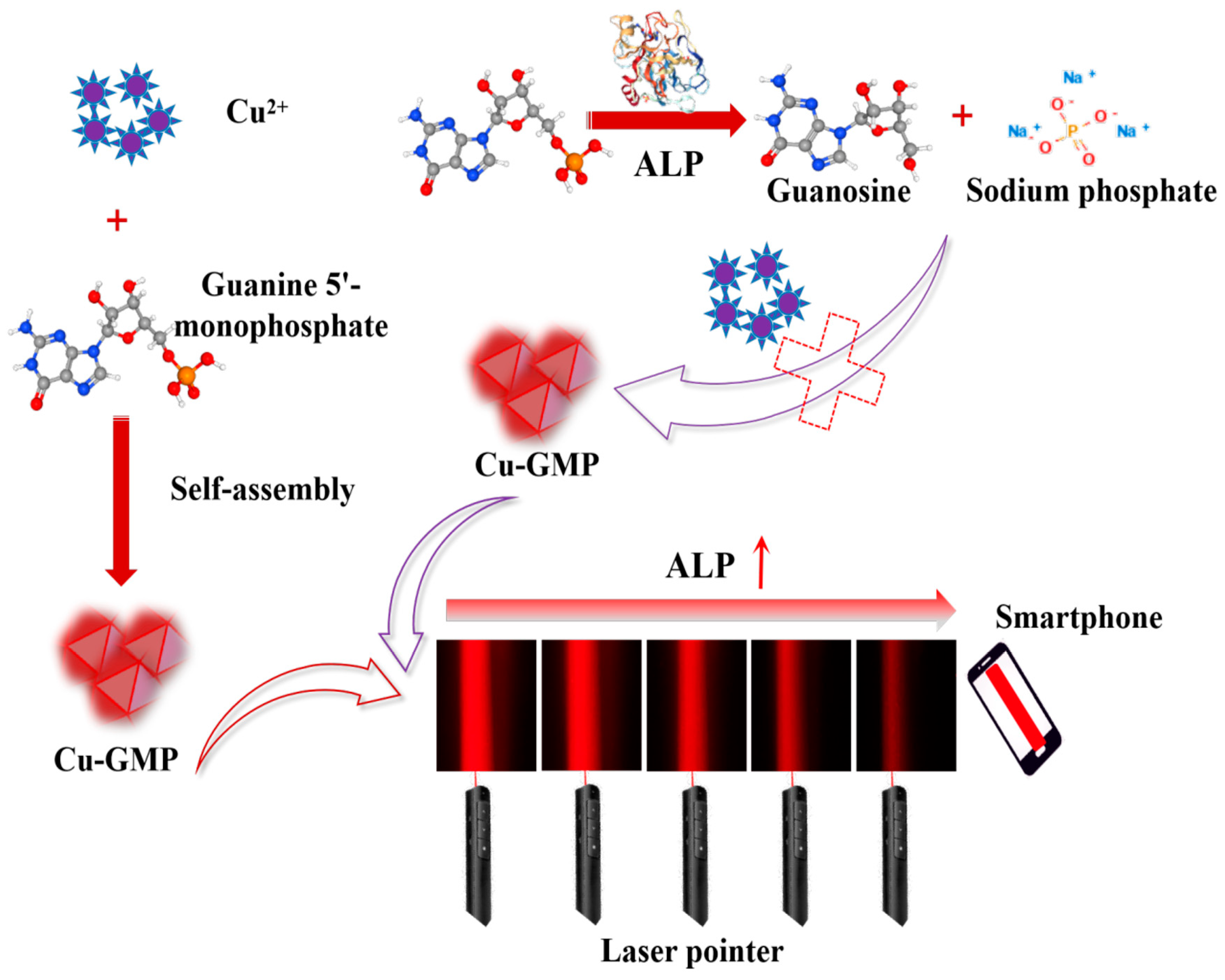

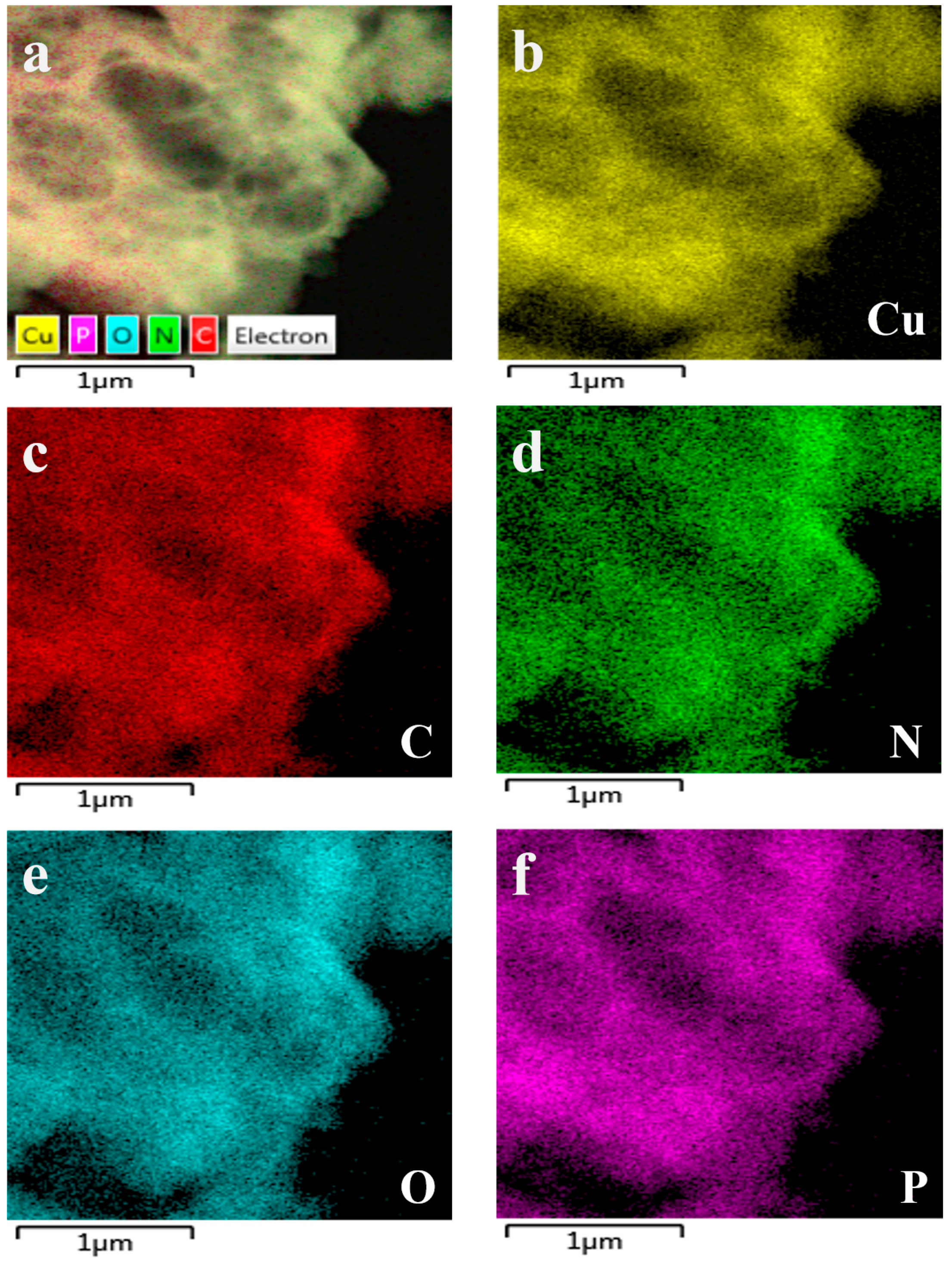

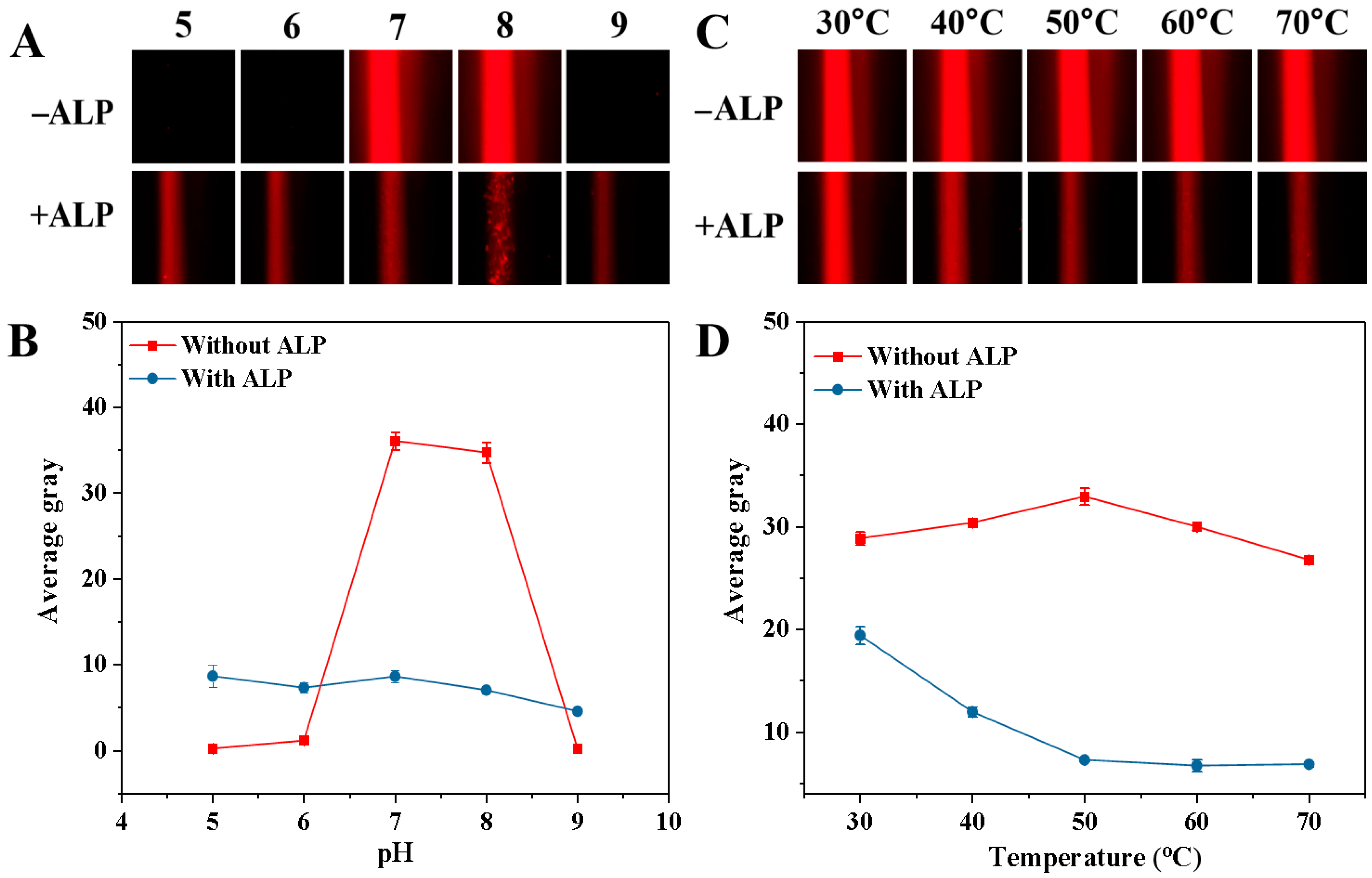
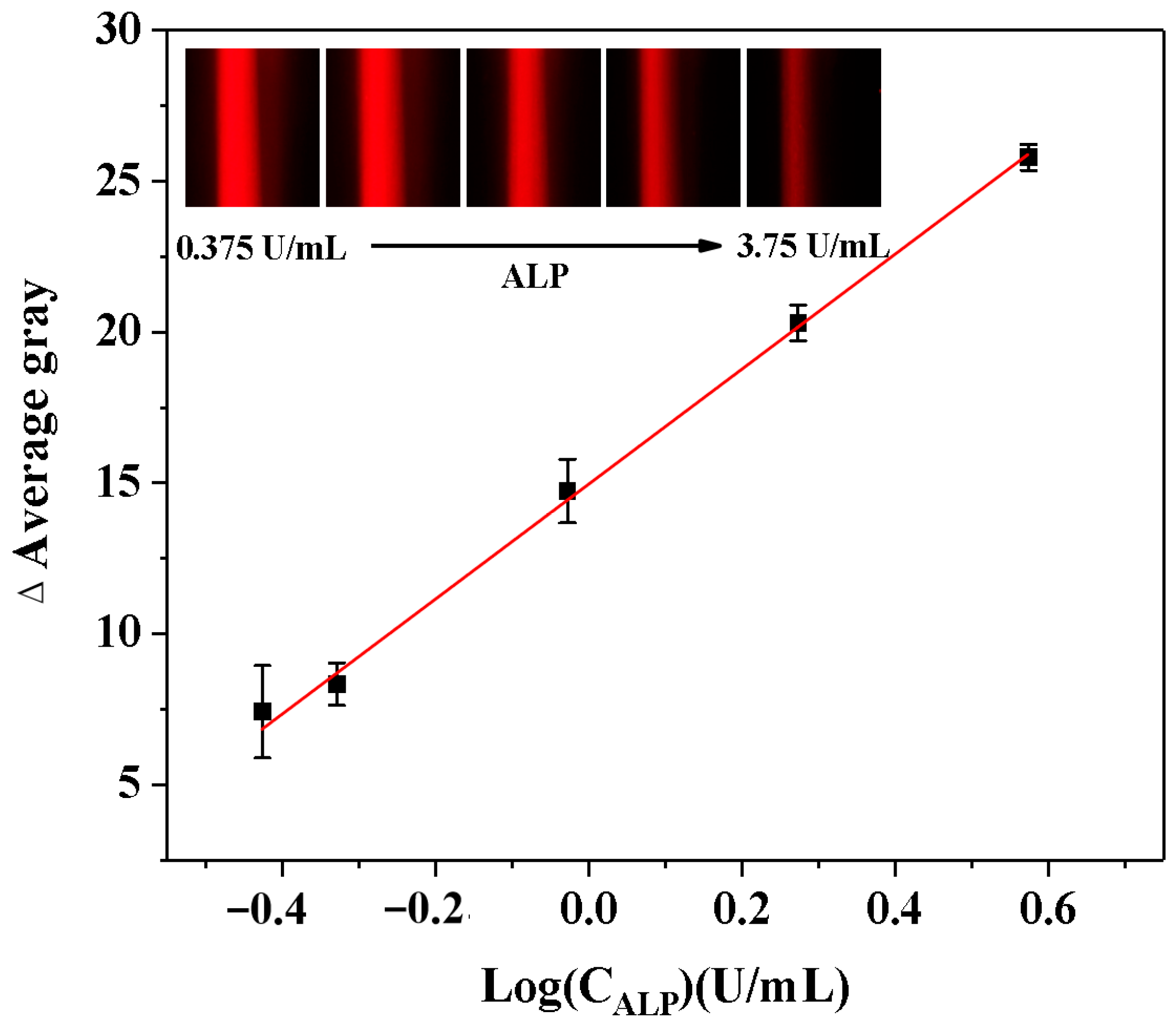
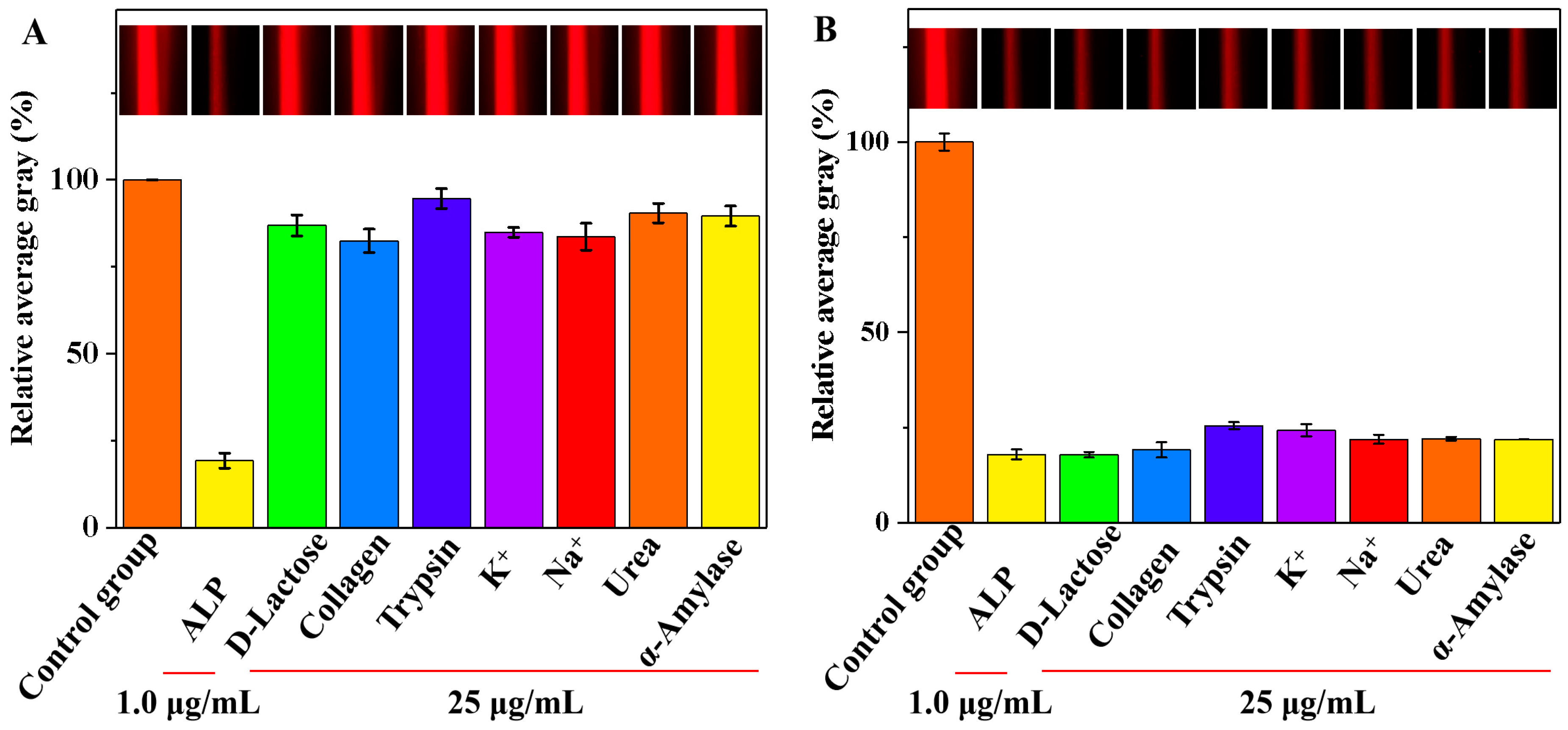
| Materials | Equipment/Consumable Requirements | Total Operation Time | Detection Methods | Linear Range (U/mL) | Sensitivity (LOD) | Selectivity | Ref. |
|---|---|---|---|---|---|---|---|
| Paper-based immunosensor | Smartphone and immunomodified test strips | >6.5 h | Colorimetric analysis with smartphone | 10.0–1000.0 | 0.87 U/mL | / | [24] |
| Eu/Dibenzoyl methane@SiO2@SiO2 | UV–Vis spectrophotometer | >27.0 h | UV–Vis | 0.02–0.09 | 0.0072 U/mL | Moderate | [25] |
| 3D DNA and paper device | Smartphone and test strips | >16.0 h | Colorimetric analysis with smartphone | 0–0.8 | 0.0134 U/mL | / | [26] |
| Au nanoparticles | Smartphone and gold nanoparticles | >0.5 h | Colorimetric analysis | 0.025–0.25 | 0.02757 U/mL | Moderate | [27] |
| Coumarin@Tb-GMP nanoparticles | Fluorescence spectrophotometer | >1.0 h | Fluorescent analysis | 0.025–0.2 | 0.01 U/mL | High | [28] |
| Amifostine | Glucose meter and matching test strips | 5.0 min | Personal glucose meter | 330−3330 | 130 U/mL | High | [29] |
| Cu-GMP coordination polymer sheets | Laser pointer, smartphone and homemade camera obscura | 25.0 min | Colorimetric analysis with smartphone | 0.375–3.75 | 0.184 U/mL | High | This study |
| Sample | Added (U/mL) | Found ± SD (U/mL) | Recovery (%) |
|---|---|---|---|
| Human serum | 0 | 0 | - |
| 0.5 | 0.51 ± 0.04 | 102.6 | |
| 1.0 | 1.08 ± 0.11 | 107.7 | |
| 2.0 | 2.18 ± 0.12 | 109.0 |
Disclaimer/Publisher’s Note: The statements, opinions and data contained in all publications are solely those of the individual author(s) and contributor(s) and not of MDPI and/or the editor(s). MDPI and/or the editor(s) disclaim responsibility for any injury to people or property resulting from any ideas, methods, instructions or products referred to in the content. |
© 2025 by the author. Licensee MDPI, Basel, Switzerland. This article is an open access article distributed under the terms and conditions of the Creative Commons Attribution (CC BY) license (https://creativecommons.org/licenses/by/4.0/).
Share and Cite
Zhang, H. The Scattering Effect-Based Smartphone-Assisted Colorimetric Sensing for Alkaline Phosphatase Detection. Biosensors 2025, 15, 650. https://doi.org/10.3390/bios15100650
Zhang H. The Scattering Effect-Based Smartphone-Assisted Colorimetric Sensing for Alkaline Phosphatase Detection. Biosensors. 2025; 15(10):650. https://doi.org/10.3390/bios15100650
Chicago/Turabian StyleZhang, Hao. 2025. "The Scattering Effect-Based Smartphone-Assisted Colorimetric Sensing for Alkaline Phosphatase Detection" Biosensors 15, no. 10: 650. https://doi.org/10.3390/bios15100650
APA StyleZhang, H. (2025). The Scattering Effect-Based Smartphone-Assisted Colorimetric Sensing for Alkaline Phosphatase Detection. Biosensors, 15(10), 650. https://doi.org/10.3390/bios15100650





